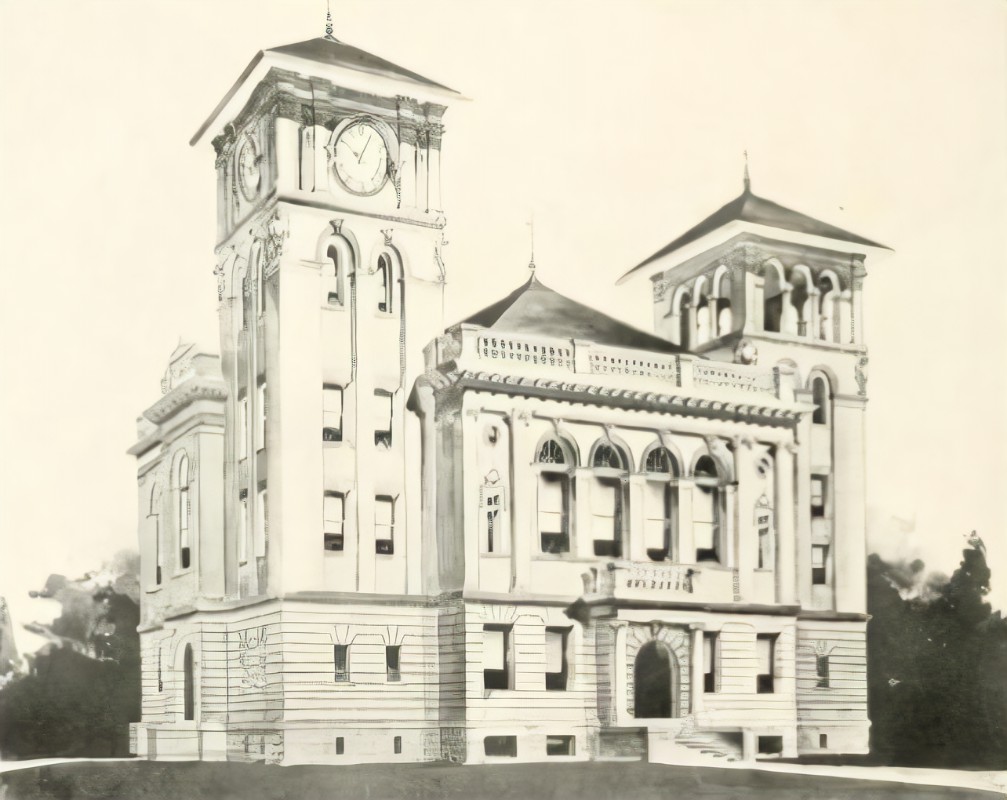As we go through the trial transcripts so far, we have seen that the case for the Commonwealth of Virginia is not going very well against Doctor Taylor. We have also discovered some abnormalities in the trial transcripts themselves. One of the subtle abnormalities comes in the format of the testimonies of the Swindall brothers and S.T. Smith. Was this change of writing style deliberate or a clue for us to know that at one point the Trial Transcripts were changed to conceal a coverup? Come with us as ponder the possibilities.
Change in the Writing Style of the Transcript
After the unreliable and disastrous testimony of Jane Mullins “star witness for the prosecution” something changed. At first, this change may not come easily to the eye, but with a close examination of the transcript, you will notice that there is a strange change in writing style at the end of Jane’s testimony. At first, this peculiar change in the transcript can be easily overlooked. But after much thought and discussion about what we know about the trial and what Johnson has told us about the trial transcripts. We have concluded that there are two possibilities for this strange and peculiar change.
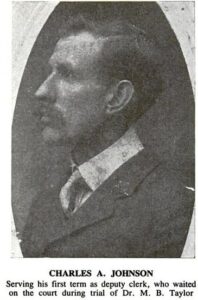
Either the typist that Charles A Johnson had hired quit, and then Johnson had hired someone else to finish out the book, or Mr. Johnson and his typist had copied the trial transcripts verbatim, as he had previously stated. Then someone else prepared the rest of the trial transcripts.
As this is yet another strange oddity in the trial transcripts, we strongly believe that this change in writing style occurred when the transcript was being prepared by the court in Wise County. At the time, it was customary for the district and circuit court clerks to prepare the appeals, transcripts, and other evidence for the appellate court. Today this would be handled by the attorneys of the accused. But at the time of the Taylor trial, the defense would write out “Exceptions” or “Writs of Error” to the trial. The court would then order these “exceptions” made part of the trial transcripts.
However, in the Taylor trial, we know that there were 12 exceptions that were ordered to be made part of the record, but these “exceptions” never made it to the appellate court. What’s more, is that this peculiar change in writing style may yet be additional evidence that the trial transcripts were edited for content before being sent to the appellate court.
The question is if this change in writing style is evidence of editing, who was the editor?
Evidence of a Different Editor to the Transcript
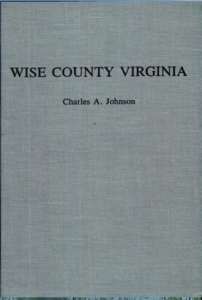
Was it the writer who, from the start of the trial transcripts through the testimony of Jane had written in a relaxed and informal manner? Or was it the writer that seems to have reported the rest of the witnesses for the prosecution in a very formal manner? Or could it be evidence of multiple editors?
Thus far each testimony had begun with the phrase “The witness testified…” and went on to the testimony. Now the reporting takes a formal and official tone, starting with the phrase “The witness testified as follows” each question still ends with a semicolon. In addition, the recorded testimony prior to this change contained a lot of, he said, and she said statements when questions were asked.
Now those questions are recorded in a more conversational way. The way in which you would expect to hear if you were listening to someone answering questions from someone else. However, the tradeoff in this is that now the answers all seem to be either multifaceted or a collection of answers to questions along the same line of questioning.
The TESTIMONY OF DOCK SWINDALL, witness for the Commonwealth.
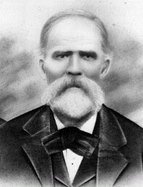
The witness testified as follows:
“I live at the Pound and know Dr. Taylor and Ira Mullins;
I live 150 yards from Ira Mullins’ house and saw him the Sunday before he was killed. Dr. M. B. Taylor stayed all night at my house on Saturday night before Ira Mullins was killed; he asked me about Ira and said Ira had offered for his life.
I was in bed when he came to my house. He asked me to get up and come out on the porch, that he wanted to talk to me. He said that sometime after Ira had offered the reward to have him (Taylor) killed, somebody had shot into his (Ira) bed, but ‘it wasn’t me,’ and laughed. He said there was aiming to come up big trouble, and that the Fleming boys would not bother me and Col. Swindall anymore, that he had that fixed.
“He asked me if there was anyone I wanted put out of the way, and I said I don’t want anybody put out of the way, unless it was somebody that wouldn’t live under the law; and he said what about Martin Sowards and Ira Mullins; Martin Sowards and me had had some trouble, I told him that I thought Ira Mullins was a very good neighbor, I didn’t know much about him.
He then told me to keep Martin Sowards and Ira Mullins located until the trouble came up, that he would be at my house every other night until the trouble came up; I remember him saying something about Henry Hall in this connection. Dr. M. B. Taylor left my house before Ira Mullins started to Elkhorn; he said something about Ira’s dog being killed. If he had any gun or pistol, I did not see them;
Grigg Swindall come to my house with him; there is a good deal of shooting around Donkey, where Ira Mullins and I live; I did not hear that Ira Mullins’ house was shot into, until I come to Wise courthouse, some days afterwards; he said there was a warrant out for the Fleming boys, and that they would not bother me anymore.”
This witness was then asked this question, this is what said: “What trouble he, witness, referred to?”
And he answered that he supposed he had referred to the trouble between him, the witness, and Flemings, when he, Taylor, said: “he had the trouble with the Flemings fixed.”
The testimony of Doc Swindall is very hard to follow, this could simply be because of the change in recording style, or it might be an indication of something else. Swindall testifies about three troubles, one that he and Col. Swindall had had with the Fleming brothers, Doc Taylor tells him that this one has been fixed. Taylor asks about putting anyone out of the way and asks about Martin Sowards, in his answer we learn that Swindall had also had some trouble with Sowards.
The third trouble is the first to be brought up in the testimony and it has to do with Ira Mullins. This trouble is only testified to by Dock and Grigg Swindall, the Often-Told story sometimes says that this trouble had to do with “A loose woman living in Ira’s house.” But whatever this trouble was, Taylor mentions it 3 times to the Swindall Brothers.
The odd thing about this trouble can be found in the question asked about it by the Judge. Taylor had stated that “…there was aiming to come up big trouble…” Taylor then tells Swindall not to worry about the trouble that he had with the Flemings because he (Taylor) had fixed it. Taylor then asks Swindall to keep an eye on Sowards, which makes no sense, and Mullins until the trouble comes up.
Doc Taylor also informs Swindall that he plans to come to his (Swindall’s) house every other night until the trouble came up. If this trouble was Swindall’s trouble with the Flemings and it had been fixed, why was Ira linked to the trouble coming up?
TESTIMONY OF GRIGG SWINDALL, witness for the Commonwealth.

The witness testified as follows:
“I live at the Pound, I knew Dr. Taylor; I last saw Dr. Taylor Sunday morning and also saw him Saturday night before;
he and I went to Dock Swindall’s that night from Clifton Roberson’s; we got there about ten o’clock that night;
Dock Taylor asked Dock Swindall if he wanted anybody put out of the way, and asked him about Ira Mullins and Mart Sowards;
he, Taylor, said there was aiming to come up a big trouble, and said he wanted Dock Swindall to keep them ’til the trouble came up;
he said he would be at Dock Swindall’s house every night or every other night that week;
he said as we came along that night, that Ira Mullins had offered three hundred dollars to have him killed’, when we got in 15 steps of Dock Swindall’s house, which was about 15 or yards from Ira’s house;
this was about 10 0’clock at night;
I don’t know who raised the talk about Ira Mullins, me or Taylor;
If Dr. Taylor was armed that night, I could not see any;
he did not say anything about Henry Hall that I remember;
I am very forgetful, don’t if I would have remembered it, if he had.”
At this point in the trial, we were at first going to end the in-depth examination of the transcript for the rest of the witnesses for the prosecution. Instead, we were going to do a compilation of the testimony for the rest of the witnesses as apart from two of them, they all testify to basically the same type of information about the sightings of Doc Taylor and the Fleming brothers before and after the Pound gap massacre.
Summary of the Testimony of S.T. Smith, witness to the Commonwealth
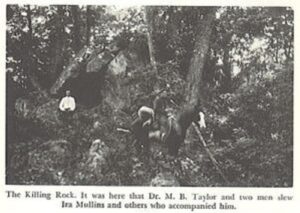
However, on a re-examination of the transcript, we discovered that after the testimony of S. T. Smith the writing style in the recorded transcript changed once again, and several times thereafter. And we felt the need to point this out with the inclusion of the Smith testimony which occurs before the next change.
Smith testifies to very little and once again leaves the reader wondering why the Commonwealth attorney called him as a witness. The only information gained from his testimony is that we discover that his name is Tom Smith, he is the brother-in-law of Dock Swindall, and he visited Doc Taylor in jail. Taylor had asked him if he knew of anything that would help him in his case. Taylor had also inquired about Dock Swindall and asked Tom to pass on a message to Swindall. The message was to remember the help that he (Taylor) had given to Swindall’s brother and to not swear too much against him.
Our Thoughts on the Matter
We think that this constant change in writing styles throughout the trial transcripts was important enough to bring up again at this point and we will mention it when it occurs throughout the rest of the trial. We believe that these changes in writing styles are important when looking at this case in hindsight. Especially when that lens of hindsight is gained from doing ten years of research into the contradictions and mysteries which surround the Killing Rock and the Pound Gap Massacre.
As we have stated, the format of these testimonies is different from the rest of those that have been previously given. The writing styles will change once again with more testimonies to come. These subtle differences have led us to the question of how accurate these testimonies were recorded for the appellate court. Or if they had been changed by Charles A. Johnson himself. We will never know the answer as Johnson’s copy of the trial is the only existing copy available to everyone. This may change through the digitization of records. It is our hope that this will happen and that we can compare the evidence that is currently available.
Thank You
We at Kentucky Tennessee Living would like to thank you for watching our series on The Killing Rock. Don’t forget when watching our videos, to hit that like button as the more likes we receive the more likely YouTube is to suggest our videos to other viewers. Also, to receive notice when we upload a new video be sure to subscribe and click the bell notification.
We thank you for continuing to support Kentucky Tennessee Living. As we bring to you the history of the Appalachian Mountains. We must remind everyone that the story names Killing Rock: The Oft Told Tale (s) and Killing Rock: The Untold Story and Killing Rock: the Trial are all under Kentucky Tennessee Living copyright.
Source Information
A Narrative History of Wise County, Virginia By Charles A. Johnson Pub. 1938.
Copyright and Other Information
All photos are in the public domain unless otherwise noted. This includes photos dated before 1923. All other photos are used with permission or under the education fair use statute of the US copyright law.
Copyright 2022 Kentucky Tennessee Living
kytnliving.com/copyright-2/
Social Media Pages
For more about us, you can visit our Facebook page:
https://www.facebook.com/kytnliving
Our Twitter page:
https://www.twitter.com/KYTNLiving
Our YouTube Channel:
https://www.youtube.com/kytnliving
When we forget our past and who we are as a people, then we become who “they” say we are. ~~ David Sergent
I have attended the University of Kentucky. I have an Associates Degree from Hazard Community College and Technical School. I have also attended the University of Pikeville. I have taken several classes in Journalism as well as in the Appalachian History, Literature, and Sociology during my time at those schools.
I was born in Florida and grew up in Burdine, Kentucky. I have been married to David W. Sergent since May 4, 2013. I have two children and four grandchildren from a previous marriage. I currently live in Tennessee but my hope is to one day come back home to live in the beautiful mountains once more.


